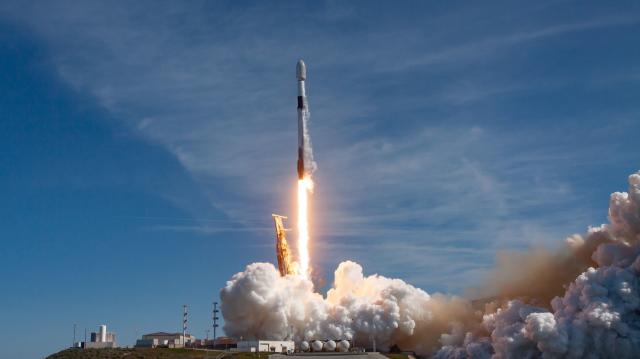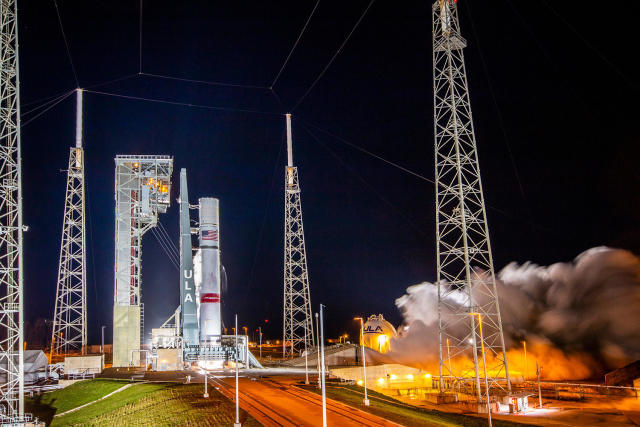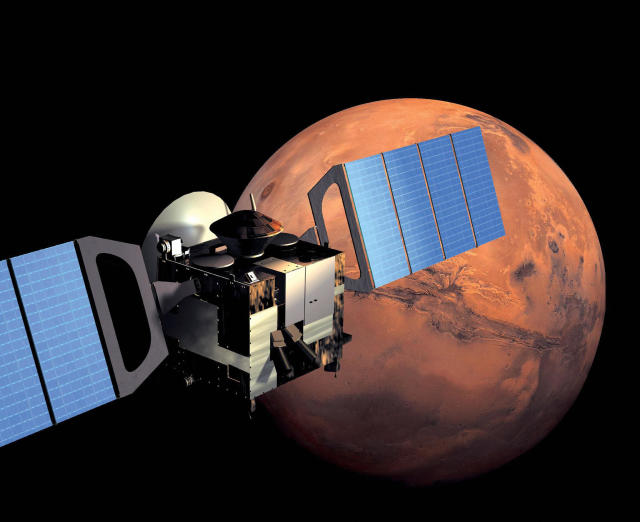Science Daily News | 14 Jul 2023

Views (103)

Vulcan rocket's maiden flight delayed in wake of Centaur mishap
The company is implementing a fix to prevent hydrogen leaks like one that destroyed a Centaur upper stage in a test failure.

Engineers have pinned down the cause of a hydrogen leak that destroyed a Centaur upper stage last March during qualification testing for United Launch Alliance's new Vulcan rocket. A fix is being implemented that will delay the Vulcan's maiden flight to late this year, a company official said Thursday.
ULA CEO Tory Bruno said the March 29 test failure was caused by higher-than-expected pressures at a specific point in the upper dome of the 18-foot-wide Centaur's hydrogen tank, along with a weaker-than-predicted laser weld where two of the triangular panels making up the dome are joined at a 12-foot-long seam.
The mishap occurred during the 15th in a series of structural qualification tests designed to demonstrate the upgraded Vulcan Centaur will operate as designed regardless of different pressures and temperatures that might be encountered across a wide range of payload trajectory requirements.
Bruno told reporters the problem is being resolved by welding a ring of stainless steel around the top of the dome where the leak occurred, making that area more resistant to higher pressures. In addition, strips of stainless steel will be welded over the top two feet of the seams joining dome segments together.
United Launch Alliance already has carried out a fueling test of the Vulcan at the Cape Canaveral Space Force Station, loading the first stage with methane and liquid oxygen propellants and the second stage with liquid hydrogen and oxygen. The company then test-fired the rocket's two BE-4 first-stage engines, provided by Jeff Bezos' Blue Origin.
The Vulcan's development "is essentially done," Bruno said. "All the components of the rocket, including the booster, have been fully qualified, with the exception of one single item, which is the qualification of the structure of the Centaur 5."
Work to beef up the Centaur will delay the maiden flight of the Vulcan, the first of two flights needed to certify the rocket for use launching national security payloads, to late this year.
That flight will launch Astrobotics' Peregrine robotic moon lander, two prototype Kuiper internet satellites for Blue Origin and cremated remains going up in a commercial Celestis memorial.
The second Vulcan flight, carrying Sierra Nevada's winged Dream Chaser cargo ship, is now expected in the first quarter of next year, Bruno said, followed a few months later by the first national security launch.
The Centaur used for the dress rehearsal countdown and engine test firing will be replaced by a beefed-up Centaur that originally was planned for the third Vulcan flight. The Centaur being prepared for the second Vulcan flight will be used to finish the qualification testing while another stage slated for the fourth Vulcan flight will replace the one that was destroyed.
"We have the root cause, we have the corrective action, the corrective action is low risk, straightforward," Bruno said. "I talked about vehicles one, two, three and four, there's another three behind that in the factory moving along apace right now. And that will allow us to fly before the end of the year, in quarter 4."
Bruno said a recent BE-4 engine failure during acceptance testing would have no impact on ULA's near-term launch schedule.
He said the engine in question had failed an initial test. After adjustments, a second test run was carried out, but "it didn't pass in a dramatic fashion." He said parameters monitored by a control computer were set too high and the engine was not shut down in time to prevent a catastrophic failure.
"We're still at the beginning of this," he said, "so you should expect to have situations like this where we'll have to tune them in. This doesn't indict the (BE-4) qualification at all. The two engines on flight one have passed this test, as have a dozen BE-4 rocket engines, all of which have been hot-fired and in total have accumulated over 26,000 seconds of operation.
"We're really confident in the design and workmanship of the assets that have passed acceptance. This is not unexpected," he said of the engine test. "It won't be the last."
Global temperatures were the hottest on record for 3 days in a row in July
The world's average temperature was the hottest on record from July 3 to July 5, 2023. Climate change and El Niño are to blame, scientists say.

RELATED STORIES:
"The temperature records keep coming," Cobb said. "But it's what they bring with them that really translates into the losses that grabbed my attention."
"Depending on how large this event gets, [there] obviously could be a really catastrophic pile-on to the year-on-year warming that we know is driven by fossil fuel emissions," Cobb said.
Iraq's water crisis drying up fish farming in Basra
Iraq is in the grip of a severe water shortage which has left crop growers and food producers such as Iraqi fish farmer Qasem Karam facing the loss of their livelihoods. Walking over dusty land in the sweltering midday heat in the southern province of Basra, Karam points to his dried up carp ponds, once irrigated by the Shatt al-Arab river. "Everything is full of salt now because of water scarcity and pollution," he said, pointing at white patches of salt crust nearby.

By Mohammed Aty
BASRA, Iraq (Reuters) - Iraq is in the grip of a severe water shortage which has left crop growers and food producers such as Iraqi fish farmer Qasem Karam facing the loss of their livelihoods.
Walking over dusty land in the sweltering midday heat in the southern province of Basra, Karam points to his dried up carp ponds, once irrigated by the Shatt al-Arab river.
"Everything is full of salt now because of water scarcity and pollution," he said, pointing at white patches of salt crust nearby.
"These ponds cost us a lot of time, money and effort. We had an economic plan, but it is all destroyed."
Upstream damming in Turkey and Iran has hit waterflows on the Tigris and Euphrates rivers which form the Shatt al-Arab river, plus dumping of wastewater and poor rainfall due to climate change have led to a drastic reduction in fish farming, experts and officials said.
Lower water levels have also increased evaporation and made the water more saline.
Karam and three other fish farmers Reuters spoke with said the loss of suitable water was driving them out of a once thriving and profitable business.
According to an official at Basra's agriculture directorate, Abbas Dakheel, only four authorised fish farms continued to work this year, as opposed to 15 in 2020.
"This water is green, dirty and polluted. No fish can live in this water," said Karam, kneeling down next to a pipe irrigating his pond.
He said that his fish were now either sick, failing to grow or dead as a result.
Jumaa Shia, head of Basra's directorate of water resources, said the city of 1.3 million needs to share its decreasing water resources among domestic users, agriculture, the oil industry and electricity generation.
To save water, authorities have taken measures including closing down some 95 unauthorized fish farms in Basra.
(Reporting by Mohammed Aty,; Writing by Charlotte Bruneau,; Editing by Alexandra Hudson)
New images show moon orbiting Earth — from Mars' point of view
The minimum distance between Mars and Earth is about 34 million miles, according to NASA.

Earth is seen as a small but bright sphere of light, with a much smaller and fainter sphere encircling it, in the video shared to the agency's website and social media page this week. The video was compiled using images taken by the Mars Express orbiter that launched on June 3, 2003, and continues to hover over the surface of Mars as its exploratory mission begins its 21st year.
The images of the moon and Earth were taken on May 15, May 21, May 27 and June 2, capturing more than half of the moon's monthly orbit around our planet.
"On the special occasion of Mars Express's 20th anniversary since launch, we wanted to bring Carl Sagan's reflections back to the present day, in which the worsening climate and ecological crisis make them more valid than ever," said Jorge Hernández Bernal, of the University of the Basque Country and Sorbonne University, who was part of the Mars Express team that worked to capture the images, in a statement.
"In these simple snapshots from Mars Express, Earth has the equivalent size as an ant seen from a distance of 100 metres, and we are all in there," Bernal's statement continued. "Even though we have seen images like these before, it is still humbling to pause and think: we need to look after the pale blue dot, there is no planet B."
The images that make up the European Space Agency's time-lapse video were captured by the super resolution channel of the Mars Express orbiter's high resolution stereo camera, which is mainly used to observe the stars as well as Mars' two moons. The orbiter's mission is focused on investigating Mars' atmosphere and climate as well as the structure of the planet itself, its geology and mineralogy, and any potential traces of water.
Butterfly count to gauge impact of extreme weather
Scientists want Scots to help find out what climate change is doing to the insects.

Scientists are asking Scots to count butterflies this summer to understand what extreme weather is doing to them.
Researchers are trying to work out what impact climate change is having on the insects.
Last year's record temperatures, heatwaves and droughts are believed to have caused some of the plants that caterpillars feed on to die.
Now Butterfly Conservation wants people to spend 15 minutes in any sunny spot and record what they see.
During last year's Big Butterfly Count, people across Scotland carried out 3,633 sessions, spotting 24,111 butterflies and day-flying moths.
The most commonly spotted species included the meadow brown, the small white and the ringlet.
Scientists now need to work out how these and other species are faring this year and are relying on the public to help them again this summer.
Dr Zoe Randle, senior surveys officer at Butterfly Conservation, said: "This is a vital year for the Big Butterfly Count.
"We know that the previous extreme summer droughts in 1976 and 1995 took a heavy toll on butterflies and numbers crashed the following year, taking almost a decade to recover.
"The data collected in Scotland during this year's Big Butterfly Count will give us a valuable insight into what the effect of the most recent extreme weather has been, and how we might be able to better protect our beautiful butterflies.
"With climate change here to stay, we need people in Scotland to take part more than ever before."
Last year, almost 100,000 counts took place across the UK, with participants spending a combined 2.5 years counting butterflies in their gardens, local parks and in the countryside.
Dr Randle added: "We know 80% of butterflies in the UK have declined since the 1970s, which means there are fewer butterflies to be seen than in years gone by.
"However, even if you don't see any butterflies during your count, we still want you to tell us.
"We need to know where there aren't any butterflies just as much as where there are, so please still log your result and then pick another day or location and try again. There are no limits on how many times you can take part."
Watch SpaceX Falcon 9 rocket launch for record-tying 16th time early Friday morning
A SpaceX Falcon 9 rocket will launch on its record-tying 16th mission early Friday morning (July 14), and you can watch the action live.

A SpaceX Falcon 9 rocket will launch on its record-tying 16th mission early Friday morning (July 14), and you can watch the action live.
The Falcon 9's upper stage, which is not reusable, will continue hauling the 54 Starlink satellites to low Earth orbit on Friday morning, ultimately deploying them about 66 minutes after liftoff.
RELATED STORIES:
0 Likes
